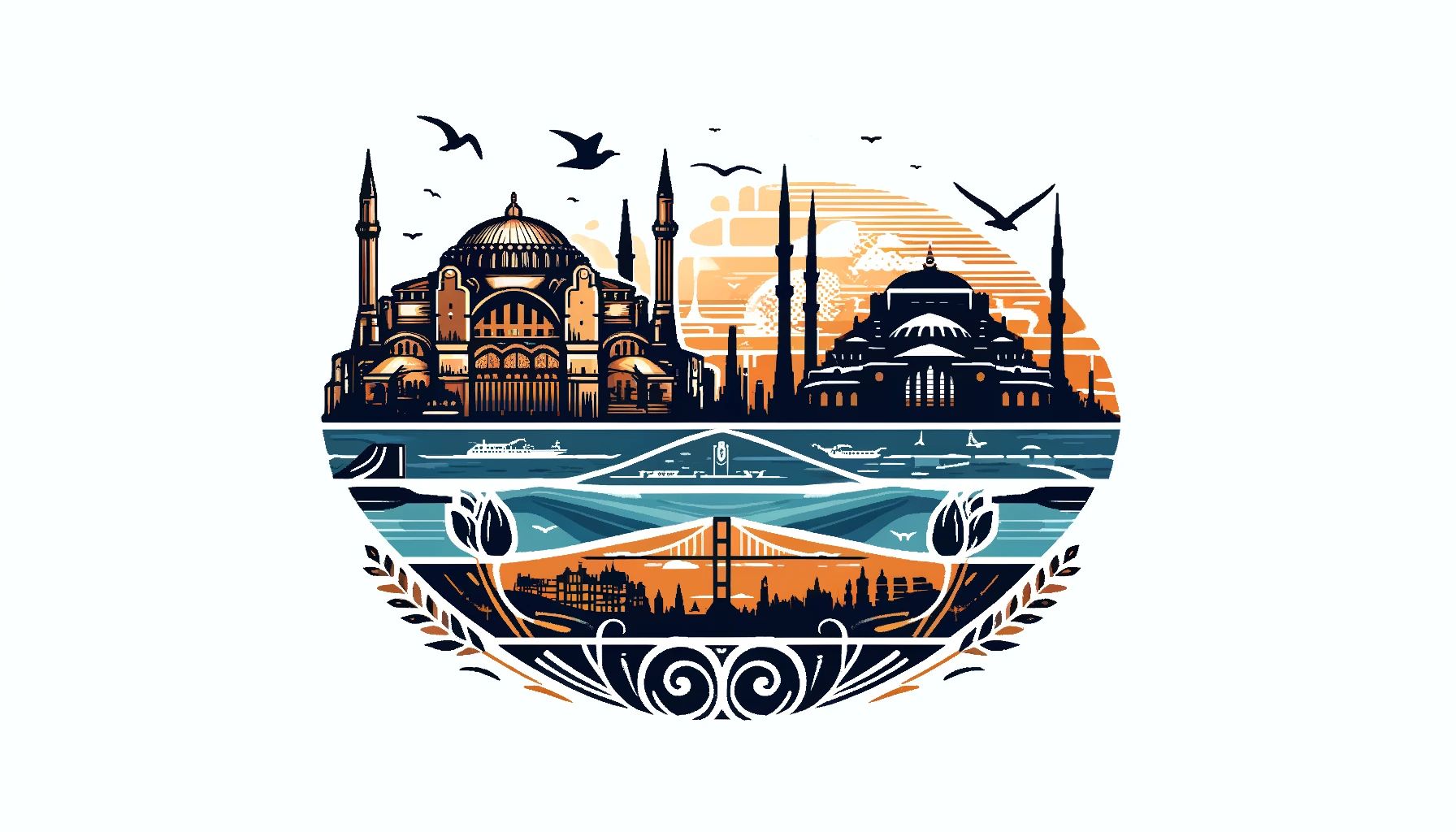Dolmabahçe Palace is the biggest palace in Turkey and is located in Istanbul. It’s famous for its beautiful and grand design. The palace mixes fancy European styles like Baroque and Rococo with traditional Turkish designs, showing off the rich culture and history of the Ottoman period.
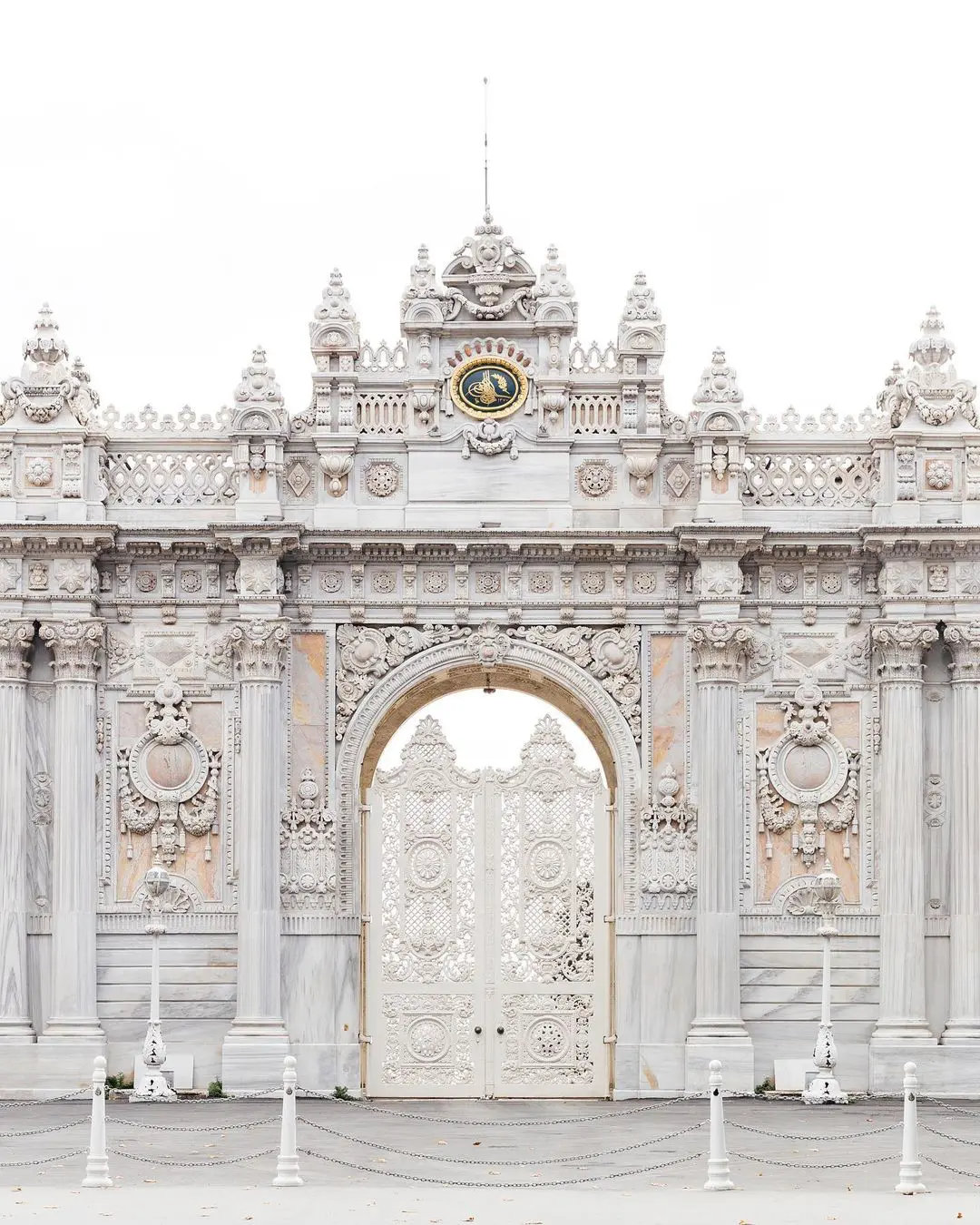
Mix of European and Turkish Styles at Dolmabahçe Palace
Dolmabahçe Palace, located in Istanbul, Turkey, is a beautiful example of how different building styles can come together. The outside of the palace shows off fancy European designs like Baroque and Rococo, which show how much Europe influenced the Ottoman Empire. Inside, the palace keeps its Turkish roots with traditional decorations that remind us of its history.
Understanding Dolmabahçe Palace’s Layout
The palace is divided into two main parts. The south side, called Mabeyn-i Humayun, was where the men lived and where all the office work happened. The north side, known as the Harem-i Humayun, was where the royal women lived. Between these two areas is a huge hall called the Ceremony Hall, or Muayede Salon, used for big gatherings and celebrations.
Rich Decorations Inside Dolmabahçe Palace
Inside, Dolmabahçe Palace is filled with fancy and expensive decorations. It has French glass and crystal staircases from Bohemia (a region in Europe), lots of gold, special carpets made from silk, cotton, and wool, ceilings made of glass, and marble from the Marmara region. One of the most eye-catching pieces is a huge crystal chandelier that came from England.
What Dolmabahçe Palace Represents
Dolmabahçe Palace is famous because it shows how the Ottoman Empire started to embrace Western styles. It mixes Ottoman and Western designs beautifully, creating a unique look that stands for a mix of Eastern and Western cultures. This palace is not just a place of beauty but also a symbol of how cultures can blend and create something new and impressive.
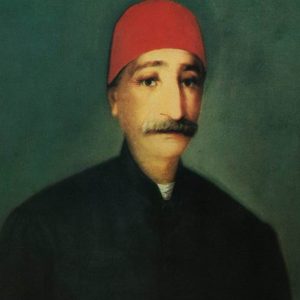
Garabet Amira Balyan was the main architect during Sultan Abdülmecid’s time. He is most famous for designing Dolmabahçe Palace, one of Istanbul’s most beautiful buildings. Garabet also designed other important buildings like the Grand Mecidiye Mosque in Ortaköy and Yıldız Palace, showing his skill in combining different styles.
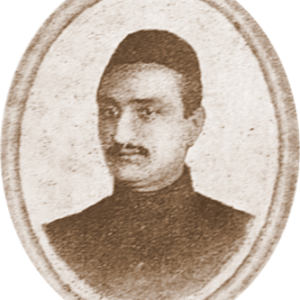
Nigogos Balyan worked with his dad, Garabet, on Dolmabahçe Palace. He specifically helped design the palace’s clock tower and its mosque, which are both important parts of the palace. Nigogos also designed other places like the Ihlamur Pavilion, the Küçük Mecidiye Mosque, and the Armenian Hospital.

William James Smith was an English architect who came to the Ottoman Empire mainly to work on the British embassy. He also helped design parts of Dolmabahçe Palace, like the Glass Kiosk. His other works include the Tophane Imperial Kiosk and the Naum Theatre, adding some British style to Istanbul’s buildings.
Dolmabahçe Palace in Istanbul is a stunning building that mixes European designs with Turkish styles. The outside walls are made of stone and the inside walls are made of brick, showing a perfect blend of strength and beauty.
Dolmabahçe Palace has a special layout inside:
Men’s Quarters and Offices: On the south side of the palace, there’s an area called the Mabeyn-i Humayun. This part was for men and included the offices where the empire’s business was handled.
Women’s Quarters and Sultan’s Private Residence: The north side of the palace is called the Harem-i Humayun. This wasn’t just where the women of the royal family lived; it was also where the Sultan’s private home was. This area has eight connected apartments, each beautifully decorated.
Ceremony Hall: Between these two areas, there’s a huge hall called the Muaide Salon. It covers 2,000 square meters and was used for big ceremonies and important meetings.
Dolmabahçe Palace is not just a large building; it’s a symbol of how the Turkish empire once thrived, blending practical spaces with beautiful designs. It’s a place where history and architecture come together to tell the story of a powerful empire.
Dolmabahçe Palace has a strong stone exterior and brick interiors. It was built using very special materials to make it look stunning. These include marble from the Marmara region, alabaster from Egypt, and other fancy items like crystals, glass, and lots of gold.
Dolmabahçe Palace is huge, covering 45,000 square meters. It is the only palace in Istanbul built as one big block. The design is inspired by European styles, with a beautifully decorated main part in the center and two side parts. Inside, there are 285 rooms, 44 hallways, 68 bathrooms, and 6 Turkish baths. The Ceremony Hall is really big, about 2,000 square meters, with a very high ceiling that is 36 meters tall.
Dolmabahçe Palace is known for being very shiny and luxurious, filled with crystals and 35 tonnes of gold. It has many Hereke carpets, which are very high-quality carpets made in Turkey. The biggest one is in the Ceremony Hall. The palace also had modern features like gas lights and flushing toilets, which were rare back then. One of the most beautiful parts of the palace is the staircase, designed in a fancy double horseshoe shape made of brass and wood. The handrails are decorated with crystals, and there is a big crystal chandelier hanging from a glass ceiling above the stairs.
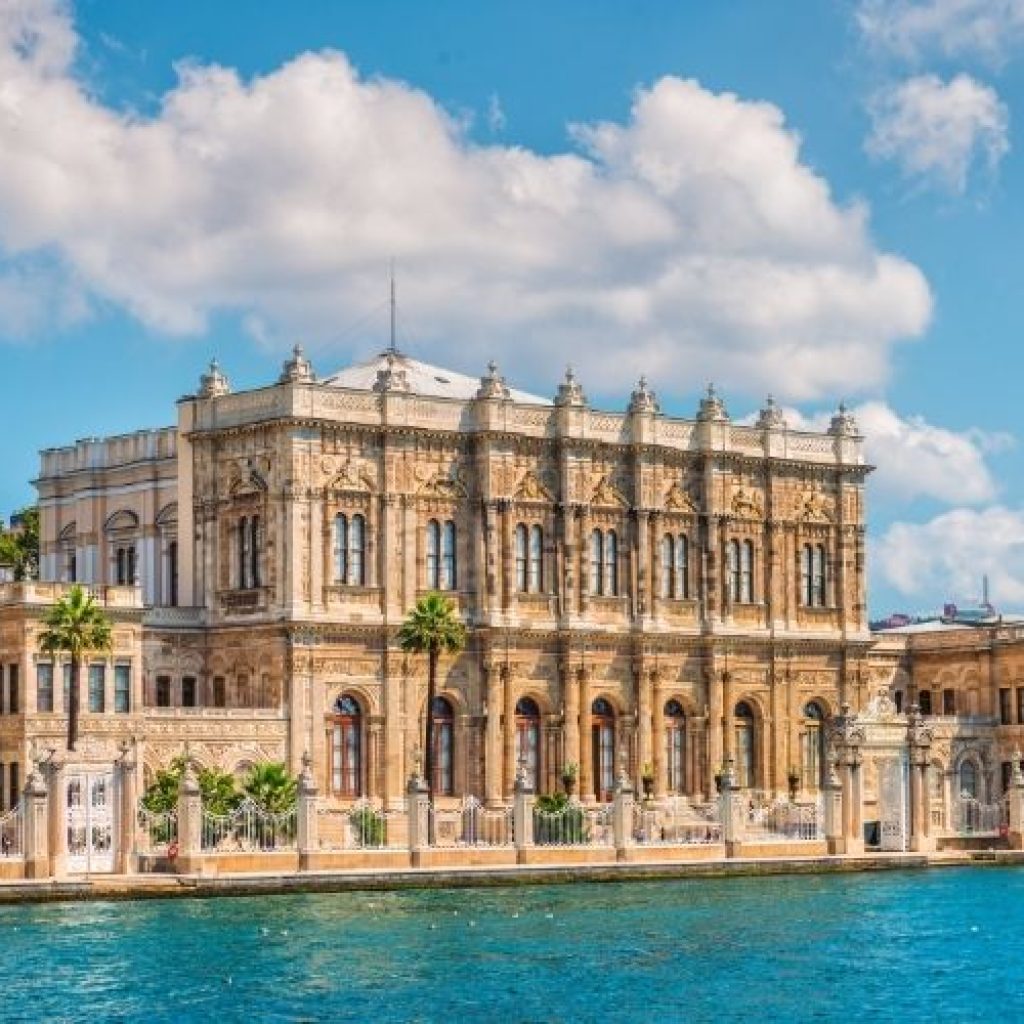
The outside of Dolmabahçe Palace is made of stone and shows off a mix of Baroque and Rococo styles, which are fancy European designs. It has many detailed pillars that make the palace look grand. The gardens around the palace are arranged in neat, geometric shapes and are decorated with statues and small ponds, making the palace grounds beautiful and peaceful.
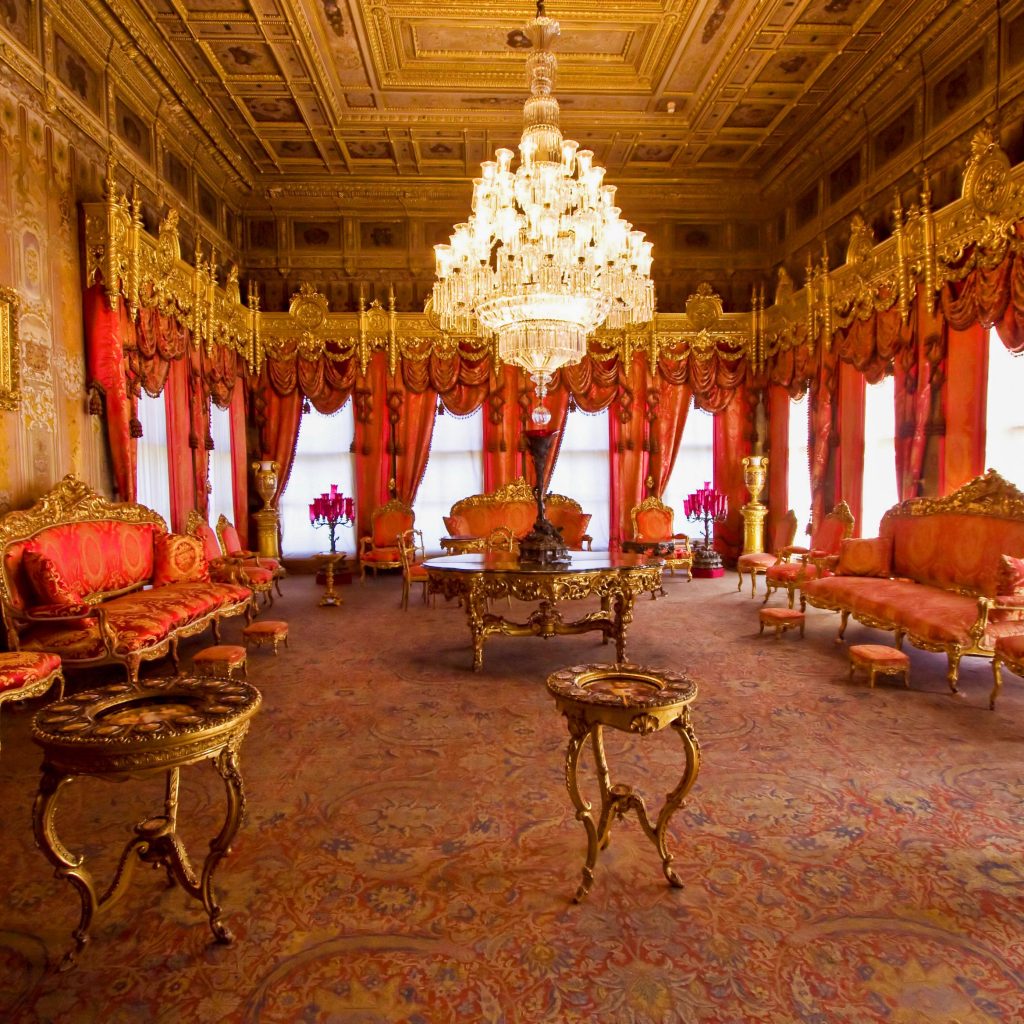
Inside, Dolmabahçe Palace is decorated in a style typical of old Turkish palaces, with lots of crystals and gold that make it look very rich. The south side of the palace, called Mabeyn-i-Humayun, is where the office spaces and men’s living quarters are found. The north side is the living area for the women of the royal family, known as Harem-i-Humayun. Between these two areas is a big, fancy hall called the Ceremony Hall. This hall is known for its large and beautiful Victorian crystal chandelier that lights up the space, adding to the palace’s luxury.

The main staircase in Dolmabahçe Palace is called the Crystal Staircase. It's beautifully designed like a double horseshoe and made with crystals under its wooden railings. The ceiling above is made of glass, making the staircase sparkle, especially with the light from the world’s largest crystal chandelier that hangs from it. This huge chandelier has 750 lights and weighs 4.5 tons. It was made in England and took two months to put up.
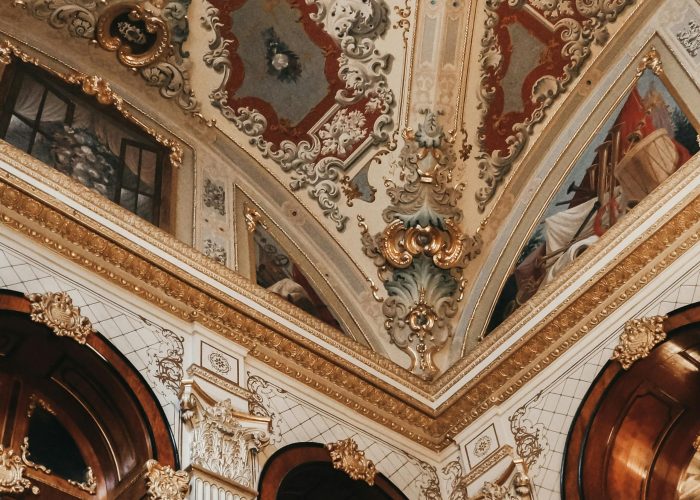
The Ceremony Hall, also known as Muaide Salon, is one of the grandest rooms in the palace. It has tall pillars, lots of gold decorations, and a big, round ceiling that is 36 meters high. Hanging from the ceiling is a very large chandelier made of Bohemian crystals. This room was used for important meetings and events, like the coronation of Sultan Murad V. It also has the largest carpet in the world made in Hereke, and it faces the sea.
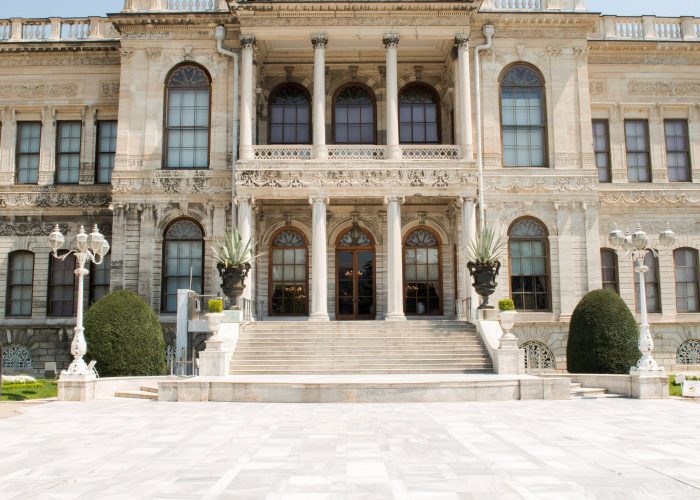
This part of the palace was where the men worked and lived. It has four big rooms, each with a fireplace, and is decorated with shiny crystal pieces. The Tiled Hall, or the Clerk’s Room, has a famous painting and is beautifully decorated with rugs and gold. This area also offers beautiful views of the sea.
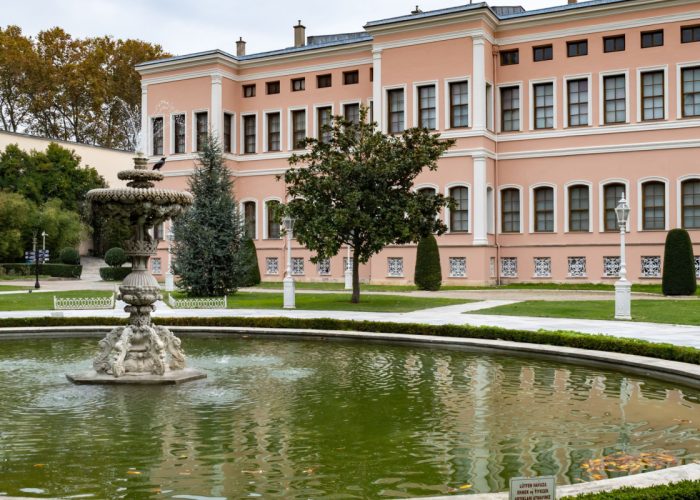
The Harem was where the Sultan’s family, including his mother, wife, and concubines, lived. It is a private and luxurious part of the palace with crystal chandeliers, fancy rugs, and gold decorations. Each room has its own Turkish bath made from special stone. The Pink Hall, the Blue Hall, and Atatürk’s room are especially beautiful and show off Turkish design.
Three main sections of Dolmabahce Palace are Administrative Area (Mabeyn-i-Humayun), Private Residences (Harem-i-Humayun) and Ceremonial Area (Muayede Hall). The palace includes 285 rooms, 44 halls, 68 washrooms, and 6 Turkish baths, making it Turkey’s largest single-piece palace.
Dolmabahçe Palace combines several styles including Ottoman, Baroque, Rococo, and Neoclassical. This mix creates a unique and beautiful look.
Dolmabahçe Palace was built by Garabet Amira Balyan and his son Nikogos Balyan, who were famous Turkish architects. Sultan Abdulmecid ordered its construction, which started in 1846.
The palace was designed by Garabet Balyan and his son Nigoayos Balyan, who were famous architects for the Ottoman royal family. They worked with William James Smith, an English architect who also helped with the design.
Dolmabahçe Palace is well-known because it beautifully mixes European designs like Rococo and Baroque with traditional Ottoman architecture. This combination is seen in its fancy decorations and luxurious interiors.
The design of Dolmabahçe Palace was inspired by European styles called Baroque and Rococo, which are very decorative and fancy. These styles were blended with Ottoman elements to create the palace’s unique look.
Dolmabahçe Palace was completed in 1856.
It took 13 years to build Dolmabahçe Palace, starting in 1843 and finishing in 1856.
Dolmabahçe Palace covers an area of 11.1 acres. The palace includes a large ceremonial hall with a high dome and the living areas for the royal family.
Key features include beautiful columns, lots of windows, and detailed decorations. Inside, the palace is decorated with expensive items like crystal chandeliers and special carpets from Hereke.
The palace has 285 rooms, 44 halls, 6 Turkish baths, and 68 bathrooms. It includes a large hall that used to separate the living areas for men from those for women and children of the royal family.
Around the palace, there are carefully designed gardens with a European style, featuring sculptures, statues, and fountains. There is also a famous clock tower outside the palace.
